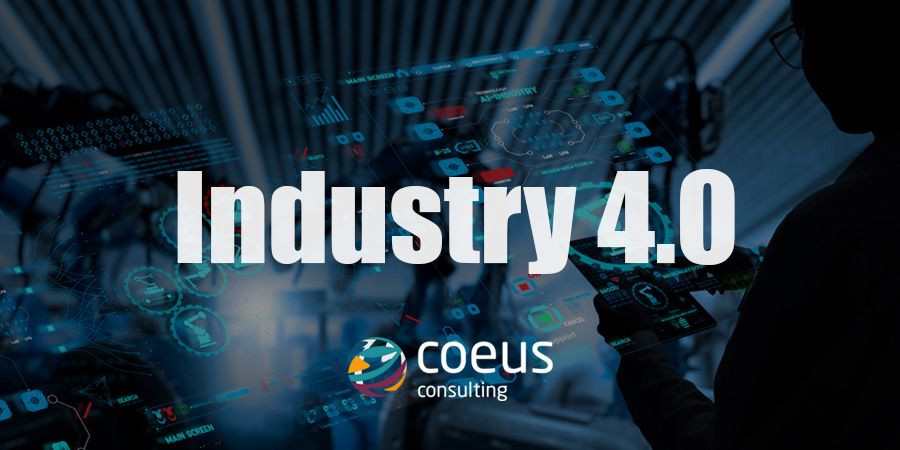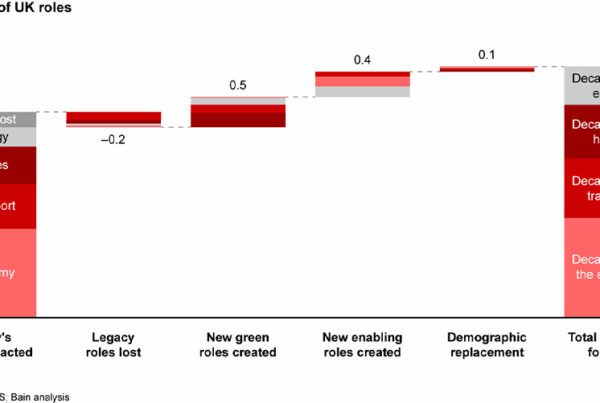The fourth industrial revolution, or Industry 4.0, is one of the most disruptive trends in the manufacturing landscape. Experts from Coeus Consulting outline why industrial organisations of any size should use Industry 4.0 as a route map for maintaining a competitive edge.
‘Industry 4.0’ was born in Germany and, like all things German, can be perceived as high quality with a high price tag. Industry 4.0 may seem an aspiration that is beyond the reach of many manufacturers and hence doesn’t make it into their strategic thinking.
The problem is compounded by two other factors. Firstly, Industry 4.0 embraces a very wide range of technology topics that can seem overwhelming under a monika that sounds ‘all in’. Secondly, the historic tendency for manufacturers has been to ring fence production IT and many elements of Industry 4.0 can feel uncomfortable in that regard.

Industry 4.0…what is it?
For leading manufacturers, developing the smart factory has become the goal as businesses race to remain meaningful and thrive in a digitised economy where integrated technology adoption is essential from design, through execution and into the life of products or facilities being created.
For example, production, ERP and supply chain solutions are areas where businesses are now leveraging cloud and ‘as-a-service’ capabilities to provide loosely coupled but highly configurable and capable solutions across the sector.
The rise of APIs has also been a game changer in manufacturing, allowing systems and data to integrate seamlessly. Integration with customers, supply chain partners, and parts of the organisation outside the core production facility creates a more reliable information flow allowing value to increase and costs to fall.
How does IoT fit in for manufacturers?
IoT is enabling data capture throughout the production process and out in the field with intelligent sensors transforming the potential of Supervisory Control and Data Acquisition (SCADA) systems. Initially this can help improve the production process and move on to enabling faster more accurate detection of faults at an affordable cost.
From there the increased data capture and application of predictive analytics allows the generation of even greater value potentially reducing unplanned down time, lowering maintenance costs and providing the opportunity to create additional value or revenue streams via the provision of enriched information.
But there’s more in the Industry 4.0 box of tricks
Augmented Reality, Virtual Reality, 3D Printing, AI and Machine Learning combined with this wealth of end-to-end data is re-shaping everything from product development and operations to training and health and safety management.
Industry 4.0 is happening at pace and organisations need to work out which elements will be the game changers for them and which the Betamax moment.
The gains in cost savings or new revenue streams make the journey worthwhile
Heavy engineering is a great example where exploiting data, IoT and digital tools is a game changer. Siemens Power and Gas estimate they have cut development to production lead-times for gas turbines by three months through use of digital twins to create, test and build products in a virtual environment. That’s not the end of the story though as the digital twin lives on to enable remote diagnostics and support.
When you overlay IoT sensors to monitor usage and schedule preventative maintenance at remote customer sites, you can see how service delivery models are being transformed. The data being propagated is a valuable asset being used to create new or enhance existing income streams.
So where to start?
First things first. You need a plan. It may be a long-term plan as you might have when renovating a ‘doer- upper’ as your first family home, where some early wins will help build confidence and momentum. The plan should be an explicit part of your business strategy and be enabled by your IT strategy.
Map where you are
However, you need to know where you are starting from. A good jumping off point is to look at your current state of maturity across the spectrum of Industry 4.0 topics. In a rough order of sophistication these include:
- Intelligent preventative maintenance to maximise production up time
- Integration of production systems data with mainstream sources of management information
- Sensors and tools to enhance production and maintenance activities
- Data analytics to detect and diagnose faults from diverse data sets
- Machine Learning to dynamically identify production defects or trigger maintenance
- Product Lifecycle Management (PLM) to open up product insights to the whole enterprise
- Digital twinning combined with augmented reality to add speed and reduce cost of rectification
- Fully integrated supply chains enabling: Cost effective / timely custom builds, and minimised stock holding of standard products / shared inventory.
- Applying Industry 4.0 principles in the drive for sustainability through business change such as: Closed loop product life-cycles; Retrofitting IoT devices to prolong the life of capital assets; Technology such as wearables to reduce the need for unnecessary travel; and Tracking / recovery / re-use of materials at product end of life.
Prioritise where you want to get to
The list of possible futures is immediately dizzying, so the plan needs to be broken down, prioritised and ordered into an executable, but reasonably ambitious roadmap. Context is everything and the value case will vary by opportunity type. Funding will be required even if the ROI is strong. Doing everything in parallel is likely to be unrealistic.
In each area (and probably a few more besides) document your current state, form a vision of where you would like to end up (not necessarily bleeding edge!), work out what initiatives are already in train and then set out your agenda for the coming years.
The key thing is to get a realistic set of aspirations agreed with short, medium or long-term prioritisation and targets for the business benefits that should flow.
Get started
The good news is that the investments needed to realise the potential gains are becoming increasingly affordable. Whether that’s deploying sensors, employing data analytics tools, implementing product lifecycle management or equipping your staff with augmented reality technology. The techniques pioneered by the world’s leading manufacturers are moving into the mainstream.




